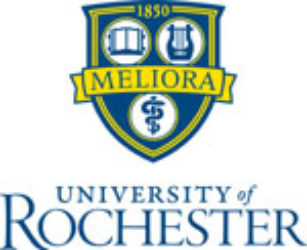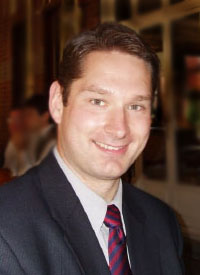
1. Greg Brady, PhD 2008
Greg received the B.E. degree in Engineering Physics and B.Sc. degree in Computer Science from the University of Saskatchewan in 1998 and the M.Eng. degree in Electrical Engineering from McGill University in 2000. From 2000-2002 he worked as an Optical Engineer for Digital Optics Corporation. His academic and professional work has involved the design, fabrication and testing of refractive and diffractive microoptical elements and systems. At UR he worked on optical metrology using phase retrieval. His PhD thesis: “Application of Phase Retrieval to the Measurement of Optical Surfaces and Wavefronts.” He joined Sandia National Laboratory in December 2008. He later joined KLA Tencor, Apple, and then the Space Telescope Science Institute.
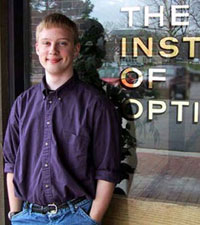
2. Matt Bolcar, PhD 2008
Matt received the B.S. degree in Applied & Engineering Physics from Cornell University in 2002. His concentration was in optics, including research in nonlinear fiber-optic lasers. He also co-oped for 3M in 2000 at the Electronic Materials Technology Center in St. Paul, MN and again in 2001 at the Optical Components Program in West Haven, CT. His PhD thesis was on phase diversity algorithms for a multiple-telescope-arrays and segmented-optics telescopes. His PhD thesis: “Phase Diversity for Segmented and Multi-aperture Systems.” He joined the Optics Branch at NASA’s Goddard Space Flight Center in Greenbelt, MD, in January 2009. Click here for Matt’s Home Page
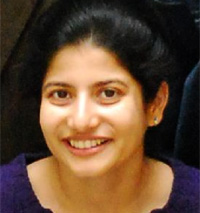
3. Sapna Shroff, PhD, ECE, 2010
Sapna was a graduate student in Electrical and Computer Engineering at the University of Rochester, advised by Prof. James R. Fienup at the Institute of Optics and Prof. David Williams at the Center for Visual Science. She has an M.S. in Electrical and Computer Engineering from the University of Rochester, 2005 and a B.E. in Electronics and Telecommunications Engineering from Mumbai University, 2003. She worked on super-resolution of retinal images. Her PhD thesis: “Structured Illumination Imaging.” She joined Ricoh Innovations, Menlo Park, CA, in August 2010. She later joined Light and then Oculus (Facebook).

4. Manuel Guizar-Sicairos, PhD 2010
Manuel received his B.Sc. in Physics Engineering in 2002 and M.Sc. in Electronic Systems in 2005 from the Tecnológico de Monterrey, Mexico. His master thesis, under J. C. Gutiérrez-Vega (http://homepages.mty.itesm.mx/jgutierr/), deals with numerical modeling of dynamic transverse mode competition in unstable resonators. From 2003 to 2005 he worked as a research assistant for the PMOG principally involved in non-diffracting propagation of wavefields and numerical methods for propagation. His PhD thesis: “Methods for Coherent Lenseless Imaging and X-ray Wavefront Measurement.” He joined the Paul Scherrer Institut, CH-5232 Villigen PSI, Switzerland, in August 2010. He is also an Associate Professor at École Polytechnique Fédérale de Lausanne (EPFL).
Click here for Manuel’s Home Page. Manuel is the recipient of the International Commission for Optics (ICO) Prize for 2019. Click here for more information about the prize and here for a more complete story. Manuel became a Fellow of the OSA in 2021.

5. Tom Zielinski, PhD 2011
Tom received his B.A. degrees in Physics and Computer Science from Drew University in 2004. His undergraduate work involved the characterization of electro-optically active thin film polymers proposed for use in future data storage and transmission applications. His PhD thesis: “Robust Image-Based Wavefront Sensing.” Tom joined NASA’s Goddard Space Flight Center in the Optics Branch in 2011.

6. Abbie Tippie Watnik, PhD 2012
Abbie received her B.S. degree in Electrical Engineering with a concentration in Optoelectical Engineering from Colorado State University in 2006. Her undergraduate research included work in iterative algorithms for phase retrieval, high resolution imaging using extreme ultraviolet sources, and fabrication of optical biosensors. Abbie entered UR as an NSF Graduate Fellow. Her research involved imaging through extended atmospheric turbulence and aperture synthesis with digital holography. She previously worked in the Summer of 2004 in our group under the Research Experience in Optical Science and Engineering for Undergraduates (REU) program. Her Ph.D. thesis: “Aberration Correction in Digital Holography.” Abbie joined the Naval Research Laboratory in August 2012.
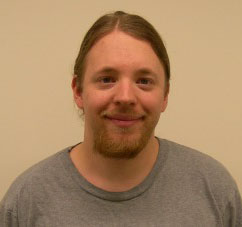
7. Alden Jurling, PhD 2014
Alden earned his B.S. in Physics from Oregon State University in 2008. His undergraduate research involved the characterization of thin film dielectric materials using impedance spectroscopy. He worked on wavefront sensing and control for NASA’s proposed space-based telescopes (both JWST and WFIRST). His PhD thesis: “Advances in Algorithms for Image Based Wavefront Sensing.” Alden joined NASA’s Goddard Space Flight Center in the Optics Branch in 2014.
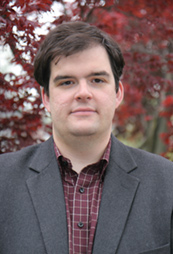
8. Dustin Moore, PhD 2016
Dustin was granted a B.A. in Physics by Reed College in 2002. His undergraduate thesis work was in the area of neutron computed tomography. He then worked for Pinecone Imaging studying telescope systems and wavefront control. Later he was the Senior Engineer for Special Projects at Immersive Media where he worked on vehicle-mounted panoramic video survey systems and other remote sensing projects. Dustin’s research interests include wavefront control systems and novel sensing systems, particularly with partially coherent light and unknown system parameters. His PhD thesis: “Optical Metrology by Prescription Retrieval and Transverse-Translation Diversity Phase Retrieval.” Dustin joined the Jet Propulsion Laboratory (JPL) in June, 2016, and later joined Maxar Technologies.
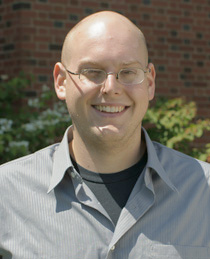
9. Zack DeSantis, PhD 2017
Zack received a B.S. in Optics and a B.A. in Mathematics from the University of Rochester in 2009. His research was on interferometric imaging, specifically focused on methods of image reconstruction from sparse data sets with large atmospherically induced phase errors. His thesis: “Image Reconstruction for Interferometric Imaging of Geosynchronous Satellites.” Zack joined Lockheed-Martin (near Denver, CO) in May, 2016.
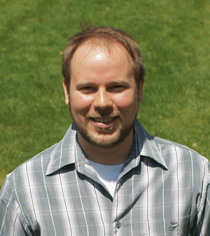
10. Matt Bergkoetter, PhD 2017
Matthew received a B.S. in Optical Sciences & Engineering from the University of Arizona in 2009, where his undergraduate projects included a resonator-based approach to measuring birefringence in optical fibers and the design of a compact multispectral imaging system that collects radar, visible and IR wavelengths through a single aperture. As a SMART Scholarship recipient, he earned an M.S. from the Institute of Optics in 2010 and worked for a year with the Air Force Research Laboratory’s Propulsion Directorate, where he developed diagnostics for laboratory-scale rocket engine tests. He entered the PhD program at the Institute in 2011, where research is focused on polychromatic wavefront sensing for ultrahigh intensity lasers. His thesis: “Phase retrieval for chromatic aberrations and wide-field detectors.” Matt joined the NASA’s Goddard Space Flight Center in the Optics Branch in spring of 2017.
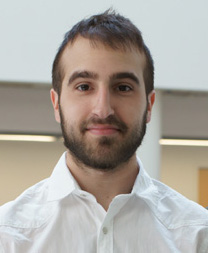
11. Alex Iacchetta, PhD 2018
Alex earned a B.S. in Optical Engineering from the University of Rochester in 2011. His undergraduate research project included designing and constructing a new optical test instrument as part of a small group for Semrock, Inc. His thesis research was on Astro-Interferometric Modeling and Spatio-Spectral Reconstruction — the title of his NASA Space Technology Research Fellowship winning proposal. His thesis: “Spatio-spectral interferometric imaging and the wide-field imaging interferometry testbed.” Alex joined Maxar Radiant Solutions, near Ann Arbor, MI, in September 2018.
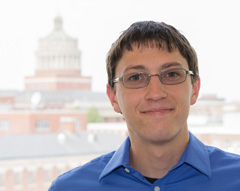
12. Scott Paine, PhD 2019
Scott earned a B.S. in Physics and Biology from Ursinus College in 2013. In his undergraduate research, he worked to build a magneto-optical trap for use with rubidium atoms. His PhD thesis research was related to wavefront sensing and control for NASA’s James Webb Space Telescope and WFIRST. His PhD thesis: “Expanding the capture range of image-based wavefront sensing problems.” He joined L3Harris (Rochester, NY, area) in August 2019.
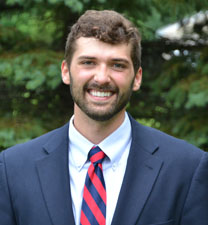
13. Aaron Michalko, PhD 2020
Aaron received a B.S. in Optical Engineering from the University of Rochester in 2014. His undergraduate design project involved designing and building a stereoscopic display for the Rochester Museum and Science Center. As a graduate student, is research interests included wavefront sensing and freeform optical metrology. His PhD thesis: “Advances in Optical Surface Metrology by Phase and Prescription Retrieval.” He joined Clerio Vision in July, 2020. He later joined the Optical Payload Center of Excellence (OPCoE) within Lockheed Martin Space.
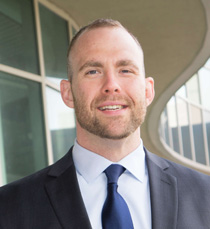
14. Wesley Farriss, PhD 2021
Wesley earned his BS in Physics from the University of Akron in 2009. Following graduation, he commissioned as a US Army Officer and served on active duty until Fall 2013. He served in the Chemical Biological Radiological and Nuclear (CBRN) and Military Intelligence branches and holds the rank of Major. His research interests included image reconstruction and digital holography. His PhD thesis: “Iterative Phase Estimation Algorithms in Interferometric Systems.” He joined KBR, Inc., in Ann Arbor, MI, in June 2021. He later joined Polaris Sensors, Inc.
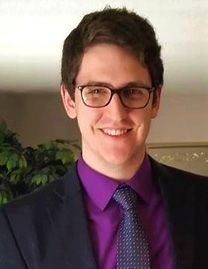
15. Scott Will, PhD 2021
Scott was born in Buffalo, New York, and received a B.S. in Electrical Engineering from the University at Buffalo in 2015. As an undergraduate, he worked to develop plasma-based metamaterials for free-space microwave manipulation, as well as compressive sensing techniques for magnetic resonance imaging. In the summer of 2014 he was a summer REU student at the Harvard-MIT HST Summer Institute in Biomedical Optics, where he worked on image processing for Brillouin microscopy. His research interests include computational imaging and image reconstruction, inverse problems, and efficient algorithms for signal processing with application to exoplanet imaging using coronagraphy. His thesis: “Advanced Coronagraphic Modeling and Wavefront Control.” Scott Joined NASA’s Goddard Space Flight Center in November 2021.
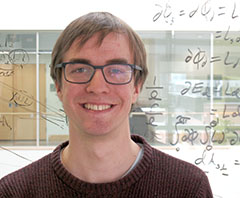
16. Matthias Banet, PhD 2023
Matthias obtained a B.S. in Physics from the New Mexico Institute of Mining and Technology. During his undergraduate education he performed research on the detection of singlet oxygen emission from photosensitive compounds. Upon receiving his degree, he worked as a contractor for the Air Force Research Lab’s Directed Energy Directorate. His current interests are directed towards digital holography and imaging through turbulence, and his hobbies include playing music and graphic design. His thesis: “Wavefront Sensing and 3D Image Reconstruction in Deep Turbulence.” He joined AFRL/RDLEM in Kirtland AFB in the spring of 2023.
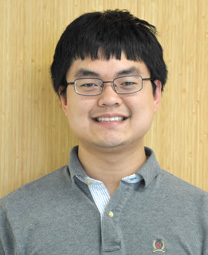
17. Joseph Tang, PhD 2023
Joseph received a B.S. in Optical Engineering from the the University of Arizona in 2015. His current research interests include wavefront sensing for space telescopes, particularly the James Webb Space Telescope. His thesis: “Improved Phase Retrieval Algorithms for Wavefront Sensing.” In Fall, 2023, he became a founder of a start-up company.
